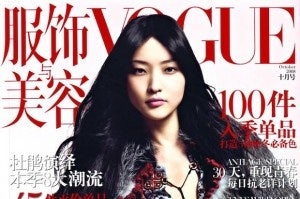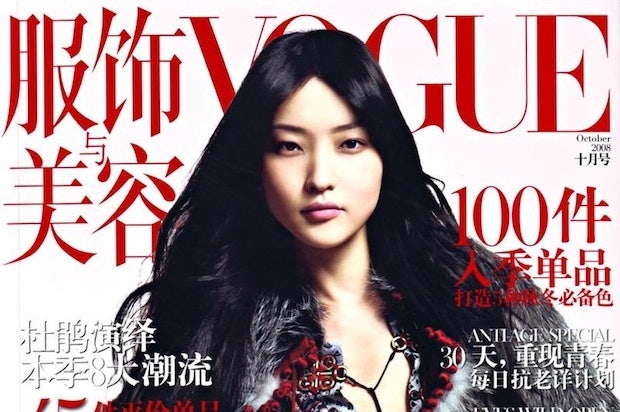Vogue China Added 4 Additional Issues Annually To Meet Advertising Demand#

Print's not quite dead in Western countries, but it's definitely not as rosy-cheeked as in decades past. Yet in China, where a burgeoning consumer class still relies heavily on glossy magazines to inform and educate on everything from autos to apparel, booming sales of the Chinese imprints of Vogue, ELLE, Cosmo and other European and American mainstays is a welcome source of revenue for otherwise struggling names. Owing to massive advertising demand, last year Cosmopolitan China split its monthly issue into two bimonthly editions as the magazine's size swelled to a unsustainable (and nearly unreadable) size, as did ELLE, and Vogue China -- just to keep up with the flow of advertisers -- added an additional four issues per year. To make things a little easier for fashion fans buckling under the weight of their magazines, Hearst is now designing special bags for readers to carry the publications home.
As China's status in the global luxury industry continues to rise -- the country is expected to become the world's largest luxury consumer by 2015 -- the desire for information, both in print and online, only looks to continue its upward trajectory. If there's one thing the emerging Chinese fashion devotee or luxury obsessive fears more than anything, it's falling behind their peers and appearing out of date. From the New York Times:
“We never take anything for granted. But so far this year, we look like we’re having a pretty good year of growth,” said Duncan Edwards, president and chief executive of Hearst Magazines International, which has agreements to have 22 magazines, including Elle and Harper’s Bazaar, published here. “There is an enormous hunger for information about luxury, and there aren’t many other places you can get that information than in fashion magazines.”
Many Chinese women will spend far more of their income than their Western counterparts on these magazines and the products featured inside them. According to a 2011 study conducted by Bain & Company, mainland China ranked sixth in the world for spending on luxury goods ranked by country. In 2010, it was a $17.7 billion market. Louis Vuitton, Chanel and Gucci remain the most desired luxury brands.
For example, both Vogue and Cosmopolitan cost about $3.15, which is significant when the average monthly individual income in Beijing is about $733. Mr. Edwards added that it was fairly common to find Chinese women who earn $15,000 a year spending $2,000 on one luxury item.
“We’re going through this wonderful period where huge numbers of women are coming out of poverty into the middle class and beyond,” Mr. Edwards said. “Many of these women are choosing to spend on luxury goods.”

One interesting aspect of China's fashion magazine boom is the average breakdown of regular readers. As Lena Yang, general manager of Hearst Magazines China, told the New York Times, the typical reader of Hearst Magazines in China is a 29.5-year-old woman who is more likely to be single than married, has an average income of around US$1,431 a month and spends $938 per season on luxury watches, $982 on handbags and shoes and $1,066 on clothes. Naturally there's a mismatch here between her income and consumption, which all leads back to the family.
As with most of China's 20-something luxury consumers, this fashion obsessive likely still lives with her parents, paying no rent and virtually no living expenses, and as an only child, receives spending money from her parents and grandparents. Given her low income, it's not just high-end brands that look to advertise in glossy fashion magazines, but also home-grown fast fashion retailers like Ochirly and Marisfrolg.
Given the slower growth rate seen by the luxury industry in China this year, will brands devote less ad spend to print in favor of digital advertising? That's difficult to discern at the moment, but considering there hasn't been a significant slowdown in consumer demand for (relatively) high-priced glossies, it's unlikely major brands will cut back significantly in 2012 -- though they may put more of a premium on digital in 2013.
